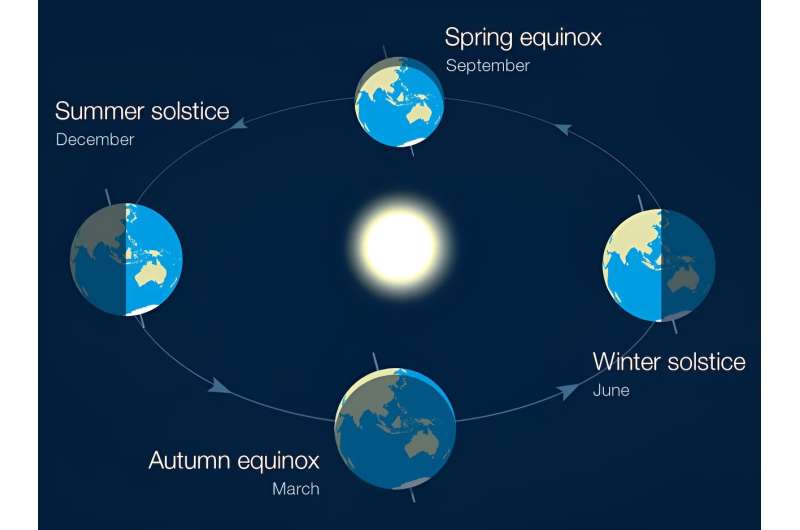Will Saturn’s rings really “disappear” by 2025?
- November 10, 2023
- 0
If you can get your hands on a telescope, there are few better sights to see than the magnificent ringed planet Saturn. Meanwhile, Saturn is clearly visible at
If you can get your hands on a telescope, there are few better sights to see than the magnificent ringed planet Saturn. Meanwhile, Saturn is clearly visible at

If you can get your hands on a telescope, there are few better sights to see than the magnificent ringed planet Saturn. Meanwhile, Saturn is clearly visible at its highest in the evening sky, just after sunset. Now is the perfect time to use your telescope or binoculars to get a good look at the solar system’s sixth planet and its famous rings.
But in the last few days, a large number of articles have appeared on social networks. These articles claim that Saturn’s rings are rapidly disappearing and will disappear by 2025! So what’s the story? Could the next few months really be our last chance to see Saturn’s powerful rings before it disappears into the evening sky?
Short answer – NO. While it is true that the rings will become almost invisible from Earth by 2025, this neither surprises nor causes panic. The rings will “reappear” shortly thereafter. For this reason.
To understand why our perception of Saturn has changed, let’s start by looking at Earth during its continuous journey around the Sun. This journey takes us through the seasons, from winter to spring, from summer to autumn and back again.
What causes seasons? Simply put, the Earth is tilted to one side when viewed from the Sun. Our equator is tilted approximately 23.5 degrees relative to our orbital plane.

Conclusion? Moving around the Sun, we alternately tilt one or the other hemisphere towards our star. When your home hemisphere is more inclined to the sun, the days are longer than the nights and you experience spring and summer. When you are bent, the days get shorter, the nights get longer, and autumn and winter occur. From a solar perspective, the Earth appears to “wobble” up and down, switching hemispheres as it moves around our star. Now let’s move on to Saturn.
Like Earth, Saturn experiences seasons, but they are 29 times longer than ours. If Earth’s equator is tilted 23.5 degrees, Saturn’s equator is tilted 26.7 degrees. Conclusion? As Saturn moves in its 29.4-year orbit around our star, it bobs up and down as seen from the Earth and the Sun.
What about Saturn’s rings? The planet’s extensive ring system of ice, dust and rock fragments extends to a distance of just over 280,000 km from the planet. However, it is very thin; In most places it is only tens of meters thick. The rings orbit directly above Saturn’s equator, so they are also tilted to Saturn’s orbital plane.
The rings are so thin that they appear to disappear from afar when you touch their edges. You can easily imagine this by taking a piece of paper and rolling it until the edge burns; the paper will almost disappear from sight. As Saturn moves around the Sun, our perspective changes. Halfway through its orbit, the northern hemisphere is tilted towards us, and the northern side of the planet’s rings is tilted towards us.play While Saturn is on the other side of the Sun, the southern hemisphere is tilted towards us. For the same reason, we see that the southern side of the planet’s rings is tilted towards us.
The best way to demonstrate this is to take your piece of paper and hold it horizontally, parallel to the floor, at eye level. Now lower the paper down a few inches. What do you see? The top of the paper is visible. Move the paper up from your eye level to keep it above you; You will see the underside of the paper. But when it passes from eye level, the paper almost disappears.
This is what we see in Saturn’s rings. As the seasons change on Saturn, we move from the southern side of the tilted rings to the northern side. The planet then turns back, revealing its southern side again. Twice in a Saturn year we see rings around the edges, but they almost disappear from view. Here’s what’s happening in 2025: The reason Saturn’s rings will seemingly “disappear” is because we’re looking at them sideways.
This happens regularly. The last time was in 2009 and the rings slowly became visible again over several months. In March 2025, the rings will reappear at the edges. They will then gradually begin to be viewed by large telescopes before disappearing again in November 2025. From now on, the rings will gradually become more distinct and will appear for the first time in the largest telescopes in the coming months. There is nothing to worry about. If you want to see Saturn’s rings clearly, your best chance is now, at least until 2027 or 2028! Source
Source: Port Altele
As an experienced journalist and author, Mary has been reporting on the latest news and trends for over 5 years. With a passion for uncovering the stories behind the headlines, Mary has earned a reputation as a trusted voice in the world of journalism. Her writing style is insightful, engaging and thought-provoking, as she takes a deep dive into the most pressing issues of our time.